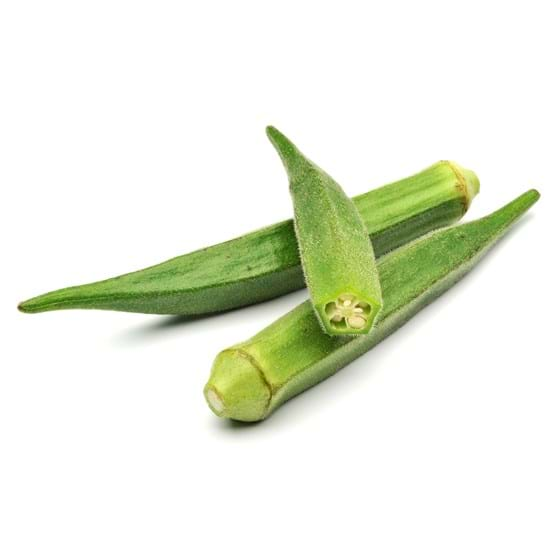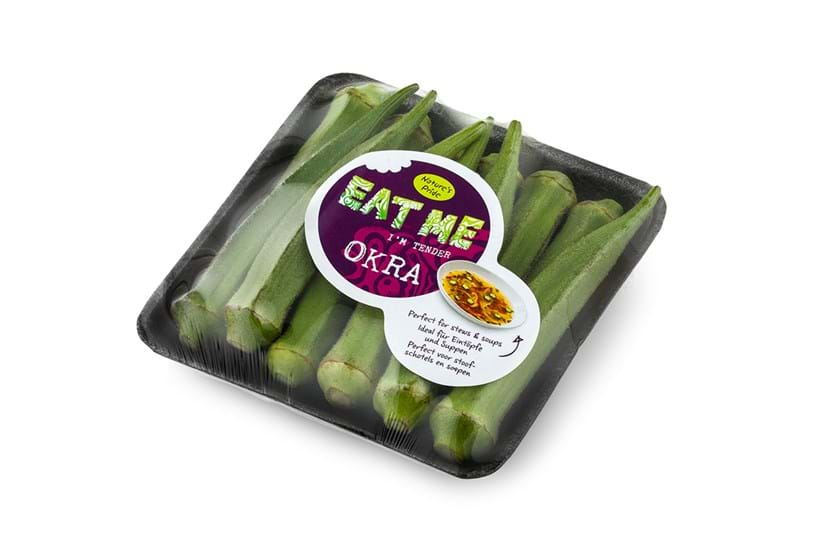Okra
A typical ingredient in Creole and African cuisine
- Directly to...

You can be forgiven for not recognising this usual shape as a vegetable. Okra is still relatively unknown in the kitchens of Western Europe. But it is very popular in the countries where it is grown. Okra features high on the list of ingredients used in Creole and African cuisine. Okra looks like a cross between a courgette and a (green) chilli pepper. They are about 5 to 10 centimetres long with vertical, ribbed stripes.
But what does EAT MAKE okra actually taste like? The flavour of this green seed pod is most like that of green beans. You can also use it as a natural binding agent for soups and other dishes. The longer you cook okra, the slimier its texture becomes.
Recipes
Okra lends itself to dishes such as tempura vegetables. In the exotic cuisines that frequently use okra, it often appears in gumbo, a cross between a soup and a stew. But why not try it in a salad?
Preparation
Okra must be rinsed well in advance. Also remove the stalk. It can then be used whole or sliced. It can be baked in the oven or grilled. The moisture released by okra can also be used as a thickening or binding agent during cooking.
How to use okra in the kitchen?
- Cooking
- Grill
- BBQ
- As a snack
- Stir-fry
- Deep frying
Storage advice
Okra will keep for longer if stored outside the fridge.
Nutritional values per 100 grams
Cook up a serving of okra more often: the vegetable is a source of vitamins C and B6 and magnesium. What functions do they support? Vitamin C helps to care for the skin from inside, B6 has a positive effect on your immune system. And a mineral like magnesium contributes to your fitness levels.
Where does okra come from?
EAT ME okra comes from Thailand, Honduras and Nicaragua. The soil there offers the ideal conditions for good growth. Okra is ready for harvest about 6 weeks after sowing.
